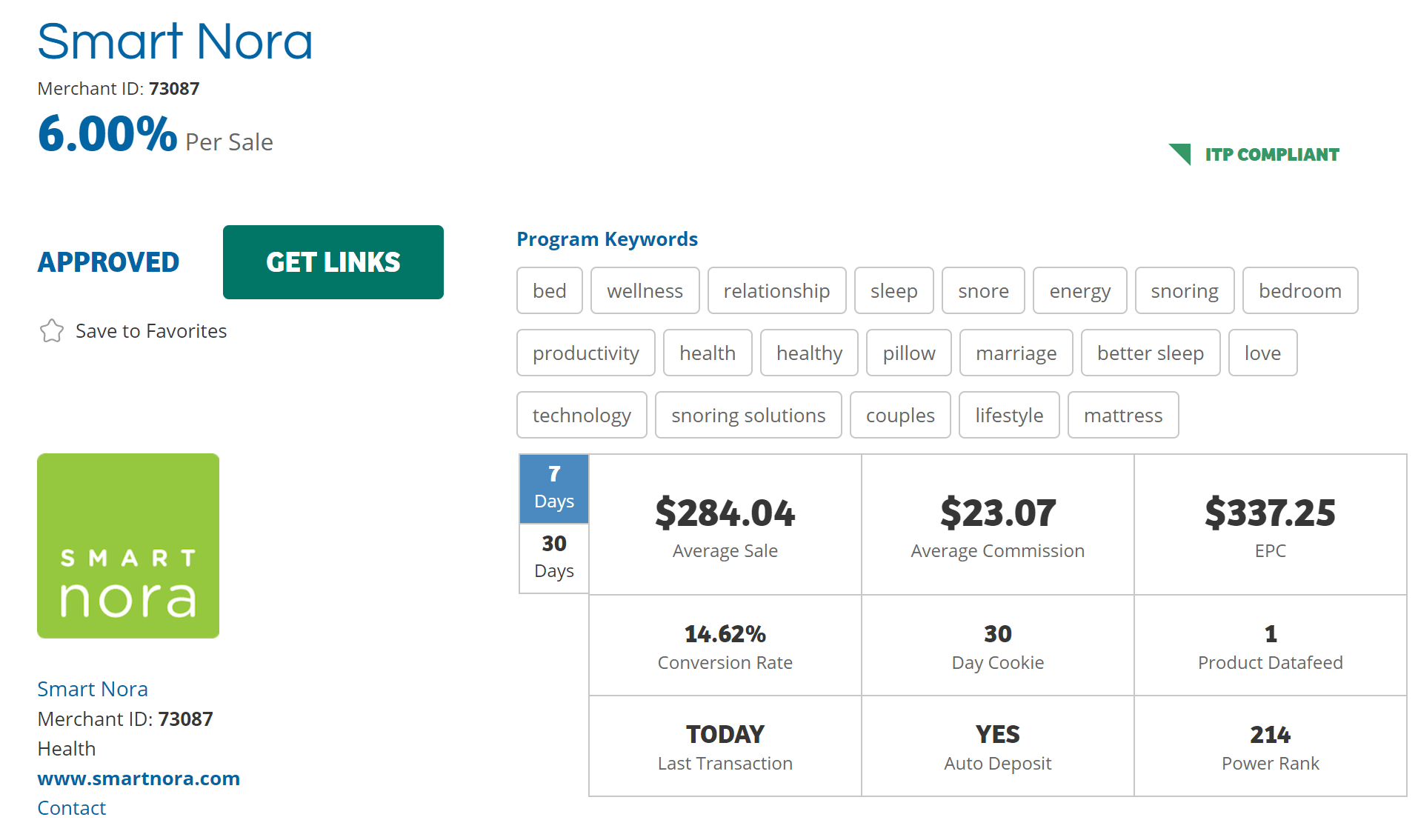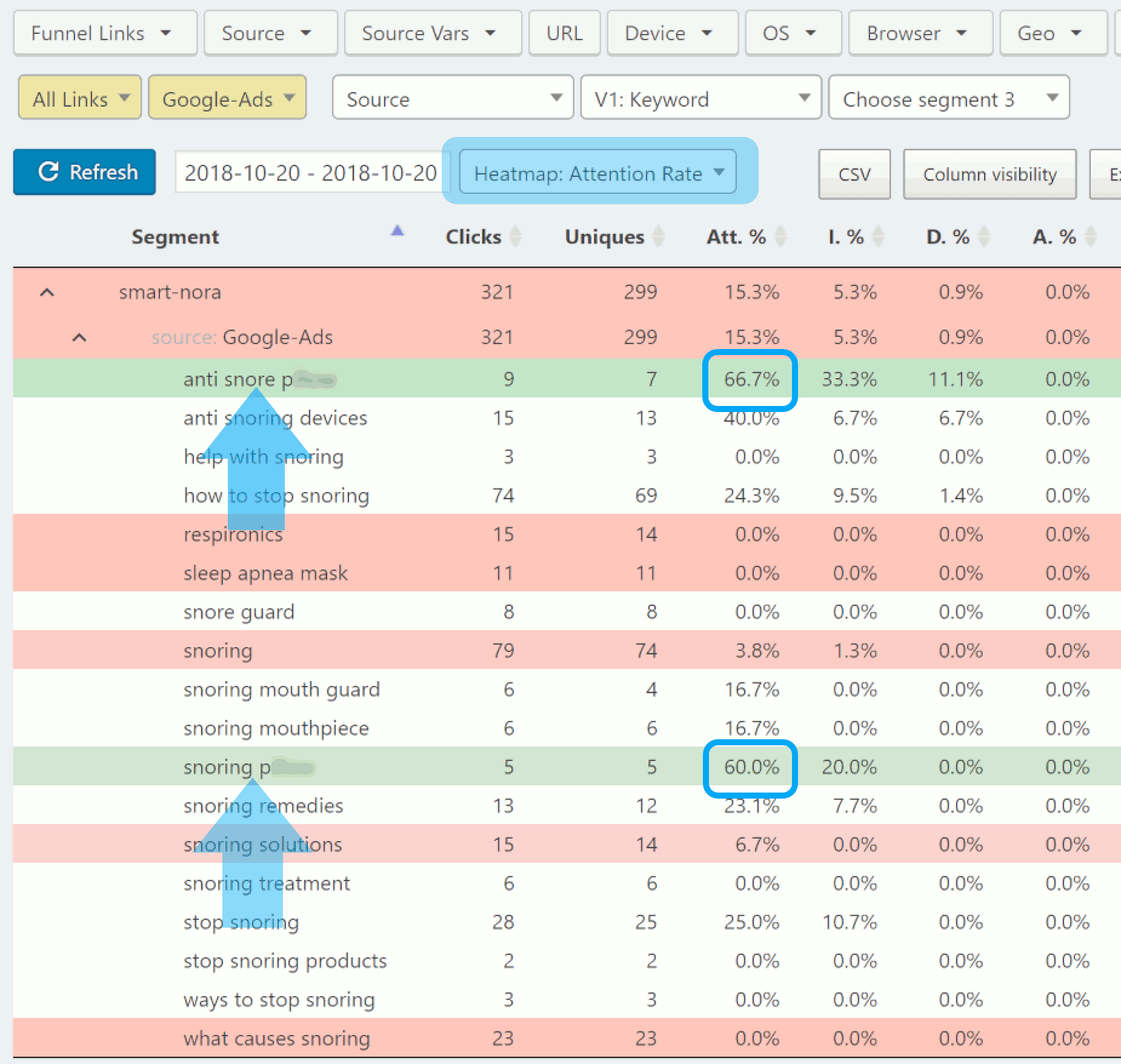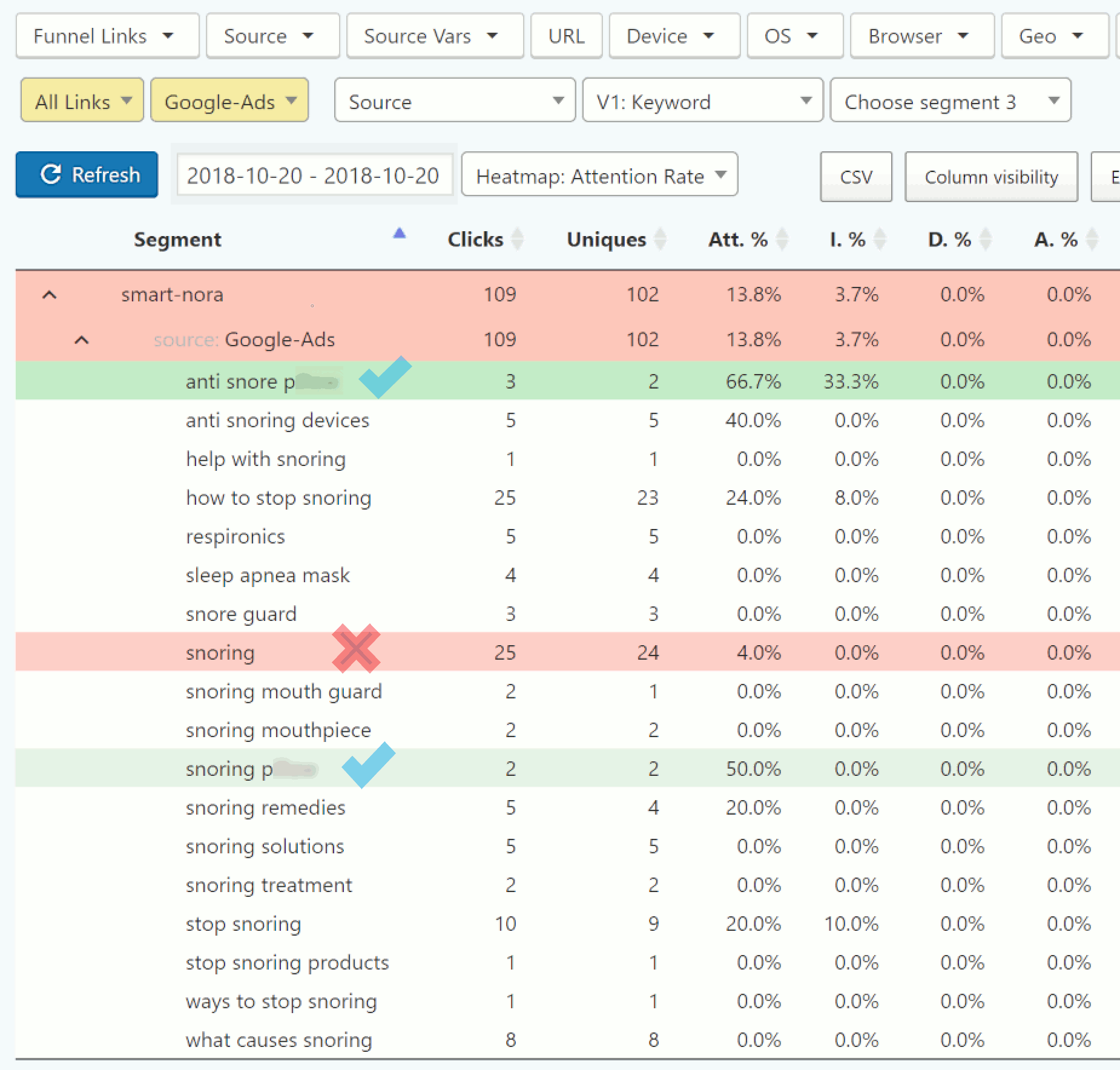AIDA Case Study
Let’s see how ClickerVolt’s AIDA can help you optimize your campaigns faster
This case study is about an anti snoring device called Smart Nora, sold through Shareasale affiliate network.
The network stats for this product look like this:

As a rule of thumb, I don’t promote anything that offers less than $20 commission. The recommendation I always read from other experienced affiliates is to promote very low cost offers. This advice makes sense in many cases, especially for newbies, to avoid burning a lot of money during the testing phase.
But truth be told, it’s also possible to promote high priced products without needing a large budget…
For that, all you need is to have some system in place. The one I’m using is called AIDA, where AIDA means:
Attention, Interest, Desire, Action.
It’s a way to track people activity on your pages (or vendor pages) to quickly find which placement/page combinations are most likely to be profitable, and which ones are most likely to be budget drainers.
It does that by assigning time duration for the first 3 letters of the AIDA acronym:
For example, if a visitor spends 20 seconds on your page, the A(ttention) is recorded.
If he spends 2 minutes on your page, the I(nterest) is recorded.
If he spends 5 minutes on your page, the D(esire) is recorded.
And if he converts, the A(ction) is recorded.
It makes sense that if a visitor doesn’t reach the Desire trigger, he will not buy what you have to offer.
Who would go to an offer page, then immediately click the buy button and purchase? No one! Unless he did some prior research and was ready to buy that product of course…
Tracking AIDA metrics mean that we can quickly find out if visitors coming from specific keywords are interested in what we have to offer or not.
The way I do it is described in the case study below:
Disclaimer: I do not pretend that you will make any money – I am only showing you the AIDA process here.
First screenshot: an overview of the campaign performance after a few hours:

As you can see, at that point the campaign was bleeding money, losing almost $90, or 3 times the offer’s payout… In just a few short hours!
Without any tracking software, I would just stop the traffic and call it a loss. I had sent 321 clicks, costing 3 times the offer’s payout, and not made one single affiliate sale after all…
But having a tracking software at my disposal, and especially ClickerVolt with its AIDA
Let’s dig deeper.
Digging into keywords with the “Attention Rate” heatmap enabled…

Even though I hadn’t made any sale by then, I could see ClickerVolt predicted 2 keywords (the green ones) to be of much higher quality than the others. I could also see ClickerVolt predicted several would be flat out unprofitable (the red ones).
Let’s go back earlier in time, when I had even less clicks sent to this campaign.
As you can see in the screenshot below, ClickerVolt’s Attention Heatmap had already predicted these 2 keywords would stand out from the others…
And it also predicted that the “snoring” keyword should be killed.

Let’s now look at the “Desire Heatmap” at that point in time.

Very early, ClickerVolt was telling me to stop paying for “snoring” and “how to stop snoring”.
I didn’t follow this advice because I wanted to have these screenshots to show the world! 😀
Now, you may wonder how ClickerVolt knew?
(Re) Introducing… The Lost-Formula for Successful Affiliate Campaigns!
(Haha… now that’s some catchy sub-title isn’t it?)
My formula when promoting affiliate offers is very simple:
- Rule 1: Any keyword that has more than 10 unique clicks and less than 20% attention rate must be killed immediately.
- Rule 2: Any keyword that has more than 15 unique clicks and less than
15 % interest rate must be killed immediately. - Rule 3: Any keyword that has more than 20 unique clicks and less than 10% desire rate must be killed immediately.
ClickerVolt’s AIDA heatmaps automatically highlight
Following the three rules above ensures that we only target visitors interested in what we have to offer.
Makes sense?
Right, let’s go on… and have a look at how the “Desire Rate” Heatmap looked like after more clicks were sent:

Now this screenshot makes it crystal clear:
The correlation between the AIDA metrics and the actual number of actions is striking!
The 2 keywords that ClickerVolt predicted would be better than the others ended up leading to 22 out of the 27 actions.
The only other keyword (“anti snoring devices”) that led to the 5 remaining actions was not tagged as either bad or good by ClickerVolt. But even though it led to 5 actions, the cost for this keyword was too high to make it profitable.
The 2 other keywords that ClickerVolt didn’t tag as red or green are not bad either, but probably not suited to promote that specific affiliate offer. I may keep them (or you can steal them) to promote some snoring mouth guard offers instead!
With the reports offered by ClickerVolt, the next optimizations were obvious:
- Stop paying for the red keywords
- Tailor the ads to talk about snoring p. (hidden keyword, sorry) to increase the CTR and traffic volume
And the final screenshot… drum roll, please…
Tada! Applying the AIDA formula in all its beauty

Disclaimer: I do not pretend that you will make any money when using ClickerVolt,
I am only showing you the AIDA process here.
I just showed you how ClickerVolt could be used to create successful affiliate campaigns way faster, and with a lower testing budget, than with any other tracker.
Give ClickerVolt a try, you’re losing precious time and money every time you launch a new campaign without it!
